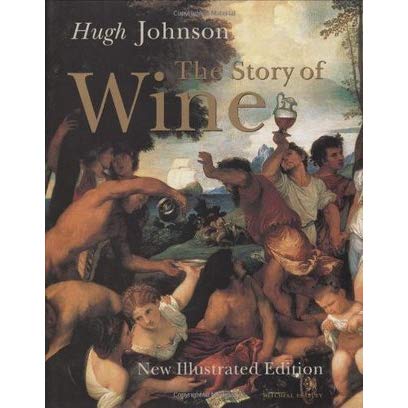- Parables In The Bible And Their Meanings
- What Is The Parable Of The Wine Skins
- The Parable Of The Wine Bottles

Solomon had a vineyard in Baal-hamon. He leased it to the tenants. For its fruit, each was to bring a thousand shekels of silver.
Isaiah 5:1
I will sing for my beloved, a song of his vineyard: My beloved had a vineyard on a very fertile hill.
Isaiah 5:2
He dug it up and cleared the stones and planted the finest vines. He built a watchtower in the middle and dug out a winepress as well. He waited for the vineyard to yield good grapes, but the fruit it produced was sour!
Matthew 20:1
For the kingdom of heaven is like a landowner who went out early in the morning to hire workers for his vineyard.
Matthew 21:28
'But what do you think? There was a man who had two sons. He went to the first one and said, 'Son, go and work today in the vineyard.'
Matthew 25:14
For it is just like a man going on a journey, who called his servants and entrusted them with his possessions.
Matthew 25:15
To one he gave five talents, to another two talents, and to another one talent--each according to his own ability. And he promptly went on his journey.
Mark 12:1
Then Jesus began to speak to them in parables: 'A man planted a vineyard. He put a wall around it, dug a wine vat, and built a watchtower. Then he rented it out to some tenants and went away on a journey.
Luke 20:9
Then He proceeded to tell the people this parable: 'A man planted a vineyard, rented it out to some tenants, and went away for a long time.
John 15:1
I am the true vine, and My Father is the keeper of the vineyard.
Hear ye therefore the parable of the sower.
And he said, Hear thou therefore the word of the LORD: I saw the LORD sitting on his throne, and all the host of heaven standing by him on his right hand and on his left.
Hear the word of the LORD, ye rulers of Sodom; give ear unto the law of our God, ye people of Gomorrah.
Thou hast brought a vine out of Egypt: thou hast cast out the heathen, and planted it…
Solomon had a vineyard at Baalhamon; he let out the vineyard unto keepers; every one for the fruit thereof was to bring a thousand pieces of silver…
Now will I sing to my wellbeloved a song of my beloved touching his vineyard. My wellbeloved hath a vineyard in a very fruitful hill: …
Saying, The scribes and the Pharisees sit in Moses' seat:
So I took the chief of your tribes, wise men, and known, and made them heads over you, captains over thousands, and captains over hundreds, and captains over fifties, and captains over tens, and officers among your tribes…
Judges and officers shalt thou make thee in all thy gates, which the LORD thy God giveth thee, throughout thy tribes: and they shall judge the people with just judgment.
For the kingdom of heaven is as a man travelling into a far country, who called his own servants, and delivered unto them his goods…
For the Son of man is as a man taking a far journey, who left his house, and gave authority to his servants, and to every man his work, and commanded the porter to watch.
He said therefore, A certain nobleman went into a far country to receive for himself a kingdom, and to return.
| Previous: The Ten Lepers Cleansed | Up: Miracles | Next: The Impotent Man at The Pool of Bethesda. |
The Water Turned Into Wine

And the third day there was a marriage in Cana of Galilee, and the mother of Jesus was there; and both Jesus was called and His disciples to the marriage, etc,

| Previous: The Ten Lepers Cleansed | Up: Miracles | Next: The Impotent Man at The Pool of Bethesda. |
Spiritual Meaning of | Back to Words index | Back to Plant words index |
Everyone that thirsteth, come ye to the waters, and he that hath no silver; come ye, buy and eat; yea come, buy wine and milk without silver and without price (Isa. 55:1);
The threshing-floor and the winepress shall not feed them, and the new wine shall deceive them. Ephraim shall return into Egypt, and they shall eat what is unclean in Assyria. They shall not pour out wine to Jehovah; and their sacrifices shall not be pleasing unto Him (Hosea 9:2-4);
Upon thy vintage hath the waster fallen; whence gladness was gathered, and joy from Carmel, and from the land of Moab, for I have caused wine to cease from the winepresses; he will not tread hedad (Jer. 48:32, 33).
I heard a voice out of the midst of the four animals saying, Hurt not the oil and the wine (Rev. 6:6);
A certain Samaritan as he journeyed, and seeing him who had been wounded by thieves, was moved with compassion, wherefore coming to him he bound up his wounds, pouring in oil and wine (Luke 10:33, 34);
I say to you that I will not drink henceforth of this product of the vine until that day when I shall drink it new with you in My Father's kingdom (Matt. 26:29; Luke 22:17, 18);
Parables In The Bible And Their Meanings
Woe unto them that rise up in the morning under the dawn, and follow strong drink; that tarry into the twilight, that wine may inflame them! Woe to the heroes to drink wine, and to men of strength to mingle strong drink (Isa. 5:11, 22).
These also err through wine, and through strong drink go astray; the priest and the prophet err through strong drink, they are swallowed up of wine, they go astray through strong drink; they err among the seer, they stumble in judgment (Isa. 28:7).
